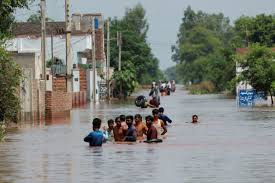Recently, heavy monsoon rains caused terrible floods in both Pakistan and India, especially in their northern border areas. Pakistan’s Punjab province and India’s Punjab, Himachal Pradesh, and Uttarakhand states have been badly affected. Hundreds of people have died, and millions have been displaced on both sides of the border.
In Pakistan, some government officials accuse India of deliberately releasing extra water from its dams to flood Pakistan’s land. They call it “water aggression” or “water terrorism.”
This accusation comes during a time of high tension between the two countries, which recently ended a six-decade-old water-sharing agreement called the Indus Waters Treaty after a deadly attack in Kashmir.
However, experts say these accusations are not supported by facts. The floods have mostly happened because of natural causes like heavy monsoon rains and melting glaciers in the Himalayan mountains. These natural factors cause rivers to overflow, affecting both India and Pakistan.
Dams in India are built to handle a certain amount of water based on past climate data. But due to climate change, rainfall patterns have changed and floods have become more severe. When dam reservoirs become full, water must be released to avoid damaging the dam itself.
India also warns Pakistan when big water releases are planned, acting on humanitarian grounds.
Both countries depend on the rivers flowing from Himalayan glaciers, but the changing climate causes more extreme floods. The flooding is a shared problem caused by nature and climate change, not a deliberate act of aggression by either side.
Experts say blaming each other for the floods only increases political tension and distracts from solving urgent issues like climate change, better flood management, and cooperation. Instead of fighting, India and Pakistan need to work together to protect people living along the rivers from future disasters.



